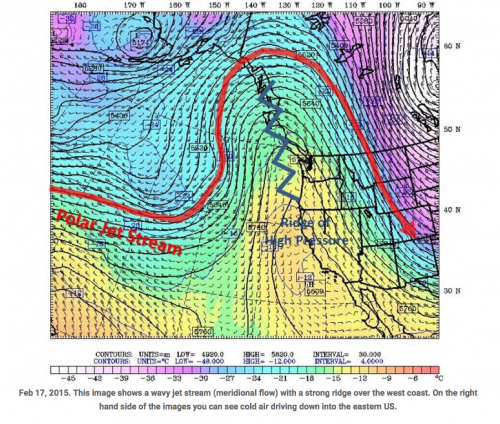Is Global Warming Responsible For Our Winter?
By Peter Marshall
This afternoon I went for a run and was quite comfortable in shorts and a T-shirt. Then I grabbed some lunch and sat in the sun for a bit. It was very warm and relaxing as I watched a group of eagles playing in some thermals and listened to golfers teeing off on the course behind me. Not exactly what February 17th should feel like! Is global warming responsible for this? Will this signal the end of skiing on BC’s North Shore Mountains? Short answer, one winter (or two in this case) don’t add up to create a pattern. This is more likely seasonal variability and there could be many factors at play (e.g. sea surface temperatures and ocean currents? climate change?).
Meanwhile, easterners are enduring another cold and hard winter. Temperatures have been bitter cold for much of the winter and many places have been hammered repeatedly by strong winter storms. I don’t think many people out east are claiming global warming is at play this winter. The reason we have seen this pattern of warm and relatively dry weather on the west coast, and cold and snowy weather back east is because of an unusually wavy jet stream. It’s left a Ridiculously Resilient Ridge over the west and the dreaded and much-hyped Polar Vortex over the east. The high amplitude ridge blocks weather from impacting the coast, or if it slides a bit east it directs the Pineapple Express to our doorstep.
Feb 17, 2015. This image shows a wavy jet stream (meridional flow) with a strong ridge over the west coast. On the right hand side of the images you can see cold air driving down into the eastern US.
Why we are seeing the weather we are is a really interesting discussion. I have my thoughts but I think it’s best left to the experts to explain what could be happening and why. Cliff Mass (a Meteorologist from Washington State) writes an excellent blog about the weather and climate of the Pacific Northwest. His latest post tackles this discussion head on. It’s a good read and very educational. Click here to read more.
Source: Cloudburst Avalanche Services












Comments